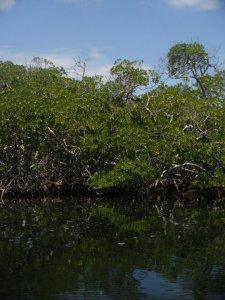Two months into my visit and I’ve certainly had my eyes opened to the scale of aquaculture in Chinese waters. We travelled 3 hours by car to the sampling site, a large-scale kelp farm, and the scale did not disappoint me. If you zoom in on Ailian Bay, Rongcheng, Shandong, China, in satellite mode in Google Maps you can begin to grasp the scale of aquaculture out here. However, after 6 months of planning and ogling the satellite view of where I was going from the safety of my desk in Oban, I had arrived, and It was certainly the eye opener I was hoping for.
 Ailian Bay kelp cultivation, Rongcheng, China.
Ailian Bay kelp cultivation, Rongcheng, China.
Before we left the dock, there was a lot of conversation with the farm workers about where we wanted to go and what we wanted to do. Professor Wang and his colleagues explain the plan and I listen intently. I always hope that I will start to understand Chinese, but for now I rely on my fairly sketchy acting skills.
 Intense discussion over the sampling plan with the farm workers
Intense discussion over the sampling plan with the farm workers
After taking the samples we took a trip to the nursery ground of some new strains of kelp being bred by staff at the Yellow Seas Fisheries Research Institute. This reminded me of scenes from popular fishing television channels. Instead of wrestling a fat slippery fish over the side of the boat, it was a long, fat, glistening sheet of Haidai (Kelp). We took lots of pictures holding the specimens before heading back to shore for a celebratory lunch.
 Landing a big one- new strains of kelp for cultivation
Landing a big one- new strains of kelp for cultivation
Celebratory lunch included anglerfish, braised sea anemone and sea urchin gonads. Luckily it was all washed down with some Jasmine tea and Tsingtao beer. After learning what I thought was Chinese for ‘Cheers!’ –Ganbei- I thought this lunch would be a good time to raise a glass and say Ganbei! However, I later learned that Ganbei means to ‘empty all’. I had inflicted a lot of beer on my peers, and hadn’t upheld the ‘empty all’ rule myself….
After lunch, before heading back to Qingdao, we took a visit to the seeding and processing area of the seaweed farm. Here you can really grasp the scale of production, here the land parallels the sea behind it, with a sea of kelp on land and beyond it a sea of suspended kelp in the bay. Farmers work to flatten out the kelp blades and allow them to be dried by the sun. The kelp is dried to prolong storage and most of this biomass will be used in the production of fertilizer.
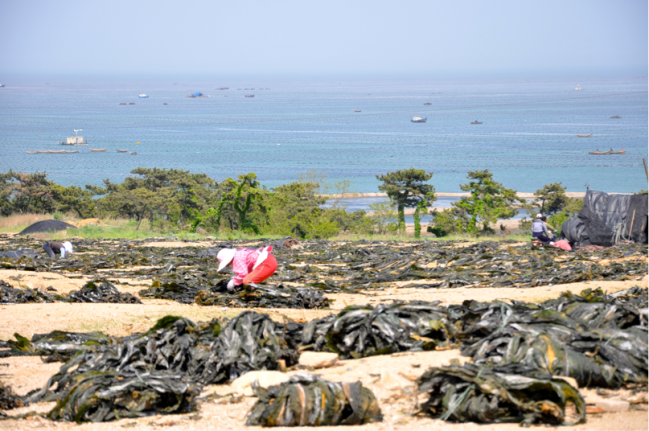 A sea of kelp, spanning the land and ocean as far as the eye can see.
A sea of kelp, spanning the land and ocean as far as the eye can see.
 Workers drying kelp for storage
Workers drying kelp for storage
I had to remember, as I got snap happy with the camera that I would be back every month until September. In this time I will be able to see the complete harvest of kelp in Ailian Bay and preparation for seeding to do it all again in autumn.
 Harvesting panorama from Ailian Bay, Roncheng, China.
Harvesting panorama from Ailian Bay, Roncheng, China.




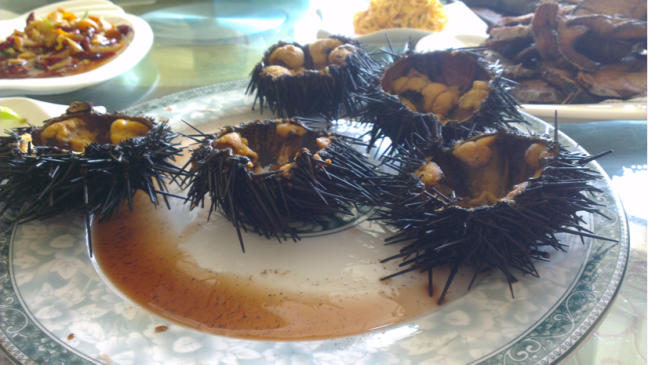
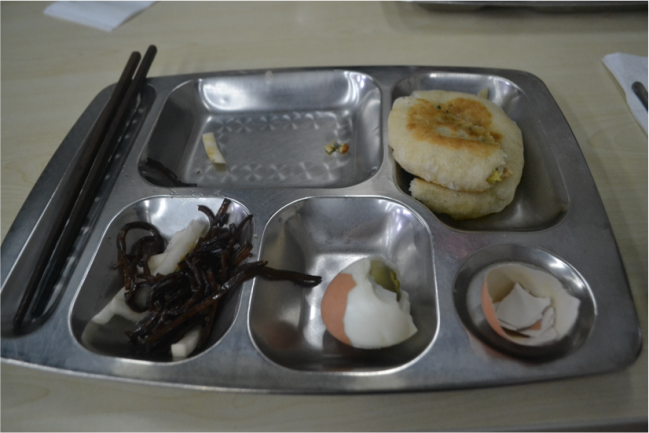 Some fried radish, a very very hard boiled egg and a fried dough cake with vegetables inside
Some fried radish, a very very hard boiled egg and a fried dough cake with vegetables inside  A green and sunny view
A green and sunny view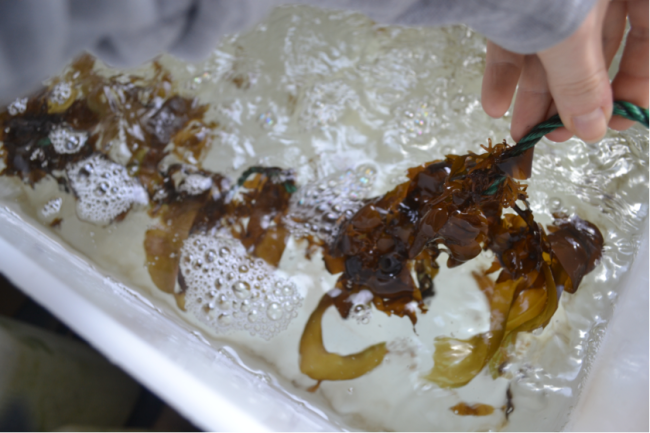 Macrocystis sporophytes on a small line
Macrocystis sporophytes on a small line  Seeding sporophytes
Seeding sporophytes  Macrosystis gametophytes for long-term storage
Macrosystis gametophytes for long-term storage  Spot the sampling equipment…
Spot the sampling equipment…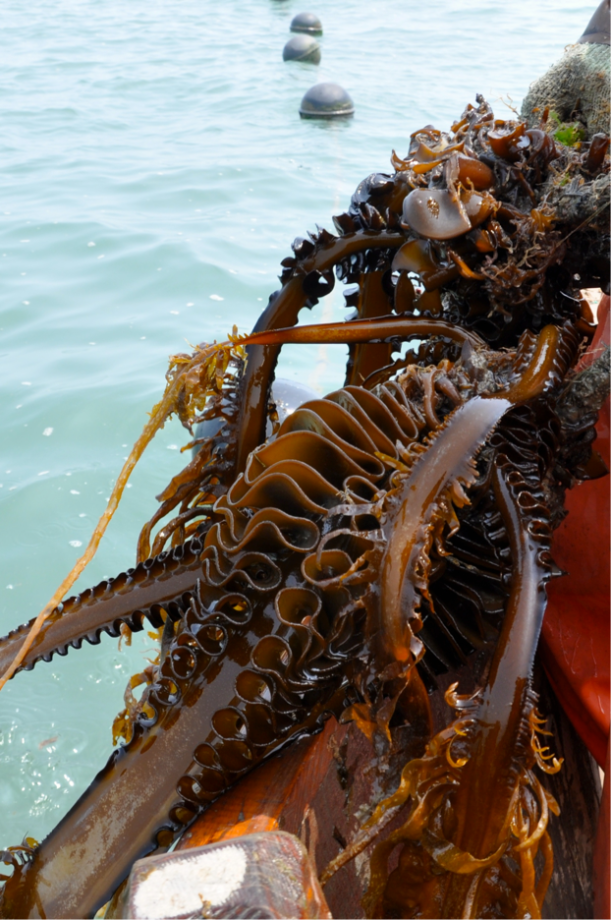 Coppiced Undaria
Coppiced Undaria  Stern fisherman showing us Gracilaria crop
Stern fisherman showing us Gracilaria crop  Stunning Laoshan Mountains as a seaweed farm backdrop
Stunning Laoshan Mountains as a seaweed farm backdrop  Fierce bridal photography competition.
Fierce bridal photography competition. Horticultural museum set in the Laoshan Mountains…a scene from stark-trek?
Horticultural museum set in the Laoshan Mountains…a scene from stark-trek? 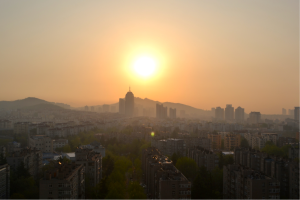 14th or should I say 16th floor view of sunrise over Mt Fushan
14th or should I say 16th floor view of sunrise over Mt Fushan 





